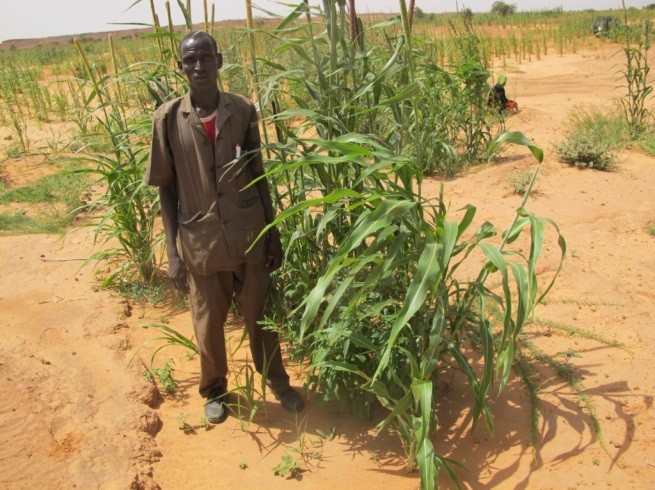
Karimou Karidjo, a 29-year-old farmer from the Tillabéri region of Niger, has had difficulty supporting his wife and four children due to poor harvests.
“I have to find food for my children. To do so, I collect and sell wood, but even then it is difficult to put food on the table,” he says.
Karidjo and others are often forced to leave their village and migrate in search of food for their families, abandoning their fields at the very time they should be planting. They are among the more than 2 million chronically food insecure in Niger, a country in West Africa where recurring drought, floods and high poverty rates make food security crises all too frequent.
2012 was a particularly bad year for Karidjo and others. The “lean season”—the period before harvest when food is scarcer—stretched from the normal four months to more than nine.
That year, USAID supported the U.N. World Food Program (WFP) with an innovative program to deliver relief assistance differently, using approaches based on seasonality and functioning markets to reinforce livelihoods while saving lives. These efforts are increasingly part of the international community’s efforts to build resilience of communities to recurrent crises.
Hadija* was one of the 2.2 million beneficiaries along with Karidjo who received food assistance from WFP in Niger thanks to support from USAID. She explains that, for her family, rations provided a huge boost during the lean season.
"I’m extremely happy to receive the food at this difficult moment. There is nothing left in our granaries. The harvest was very bad [and] we could not feed our children. I can only thank those who are helping us to have food on our plate. I hope for a better future,” said Hadija.
Severely food-insecure households received food or cash assistance, depending on food availability in their local markets. Where markets were working well, families received funds sufficient to buy a standard food basket in local markets. Recipients can access a more diverse food basket—including fruits, vegetables and dairy—when buying locally, and the relief assistance reinforces the local economy. Where markets were not robust, or too remote, families received food rations instead.
USAID, through WFP, also provided supplementary fortified and blended nutritious foods for children six to 23 months as well as pregnant and lactating women to treat and prevent malnutrition.
When community members were not working their fields, WFP made food and cash transfers conditional for many, providing them in exchange for work that developed shared resources, such as rehabilitating farmland that yields more food for the community. Village members learned simple agricultural techniques like banquettes and half-moons by digging simple shapes into the land to maintain topsoil and improve land quality and food production. Those who worked earned food to feed their families, or cash to buy food.
These conditional transfers, known as “food assistance for assets” programs, can be the most appropriate response following poor harvests and until the start of the planting season, as community labor can mitigate against drought, improve harvest prospects, and prevent untimely migration and other negative coping mechanisms.
The ability of USAID to program both cash and commodities in these situations is critical to the program’s design and impact, and is part of a longer term strategy to strengthen resilience of the most vulnerable. Delivering lifesaving aid in a way that helps communities help themselves aims to promote self-reliance and reduce the need for future food assistance.
*Full name not available.







Comment
Make a general inquiry or suggest an improvement.